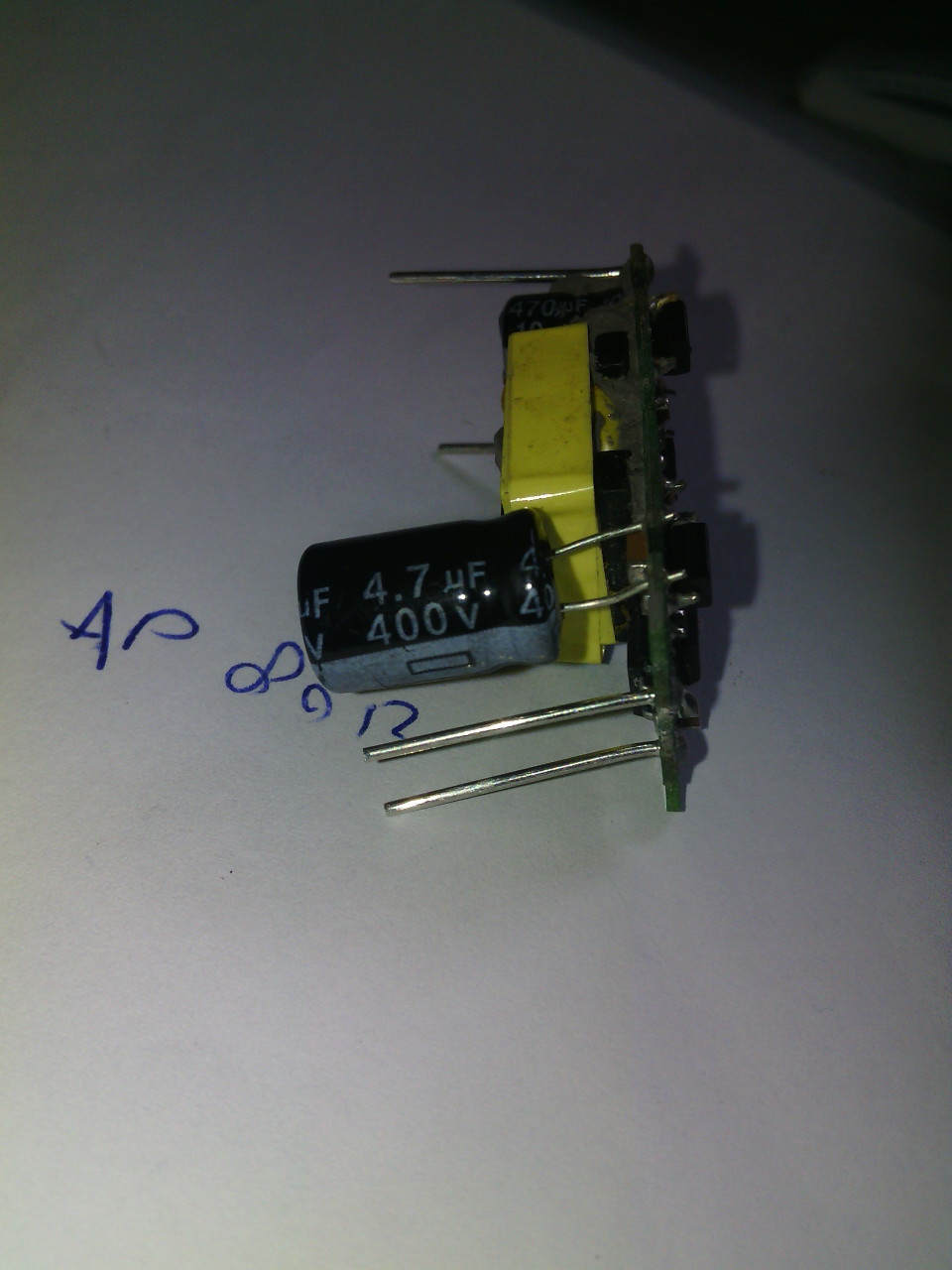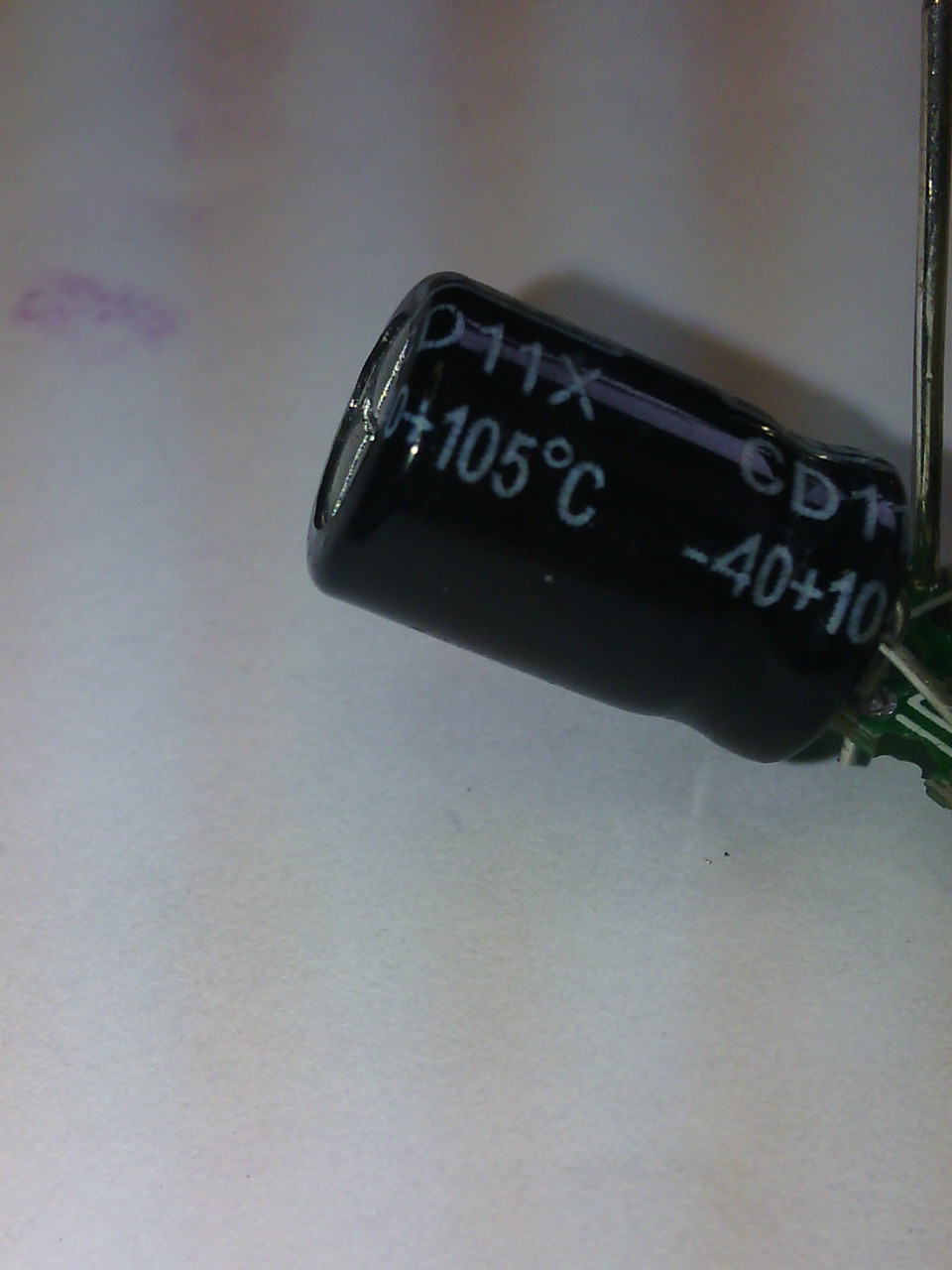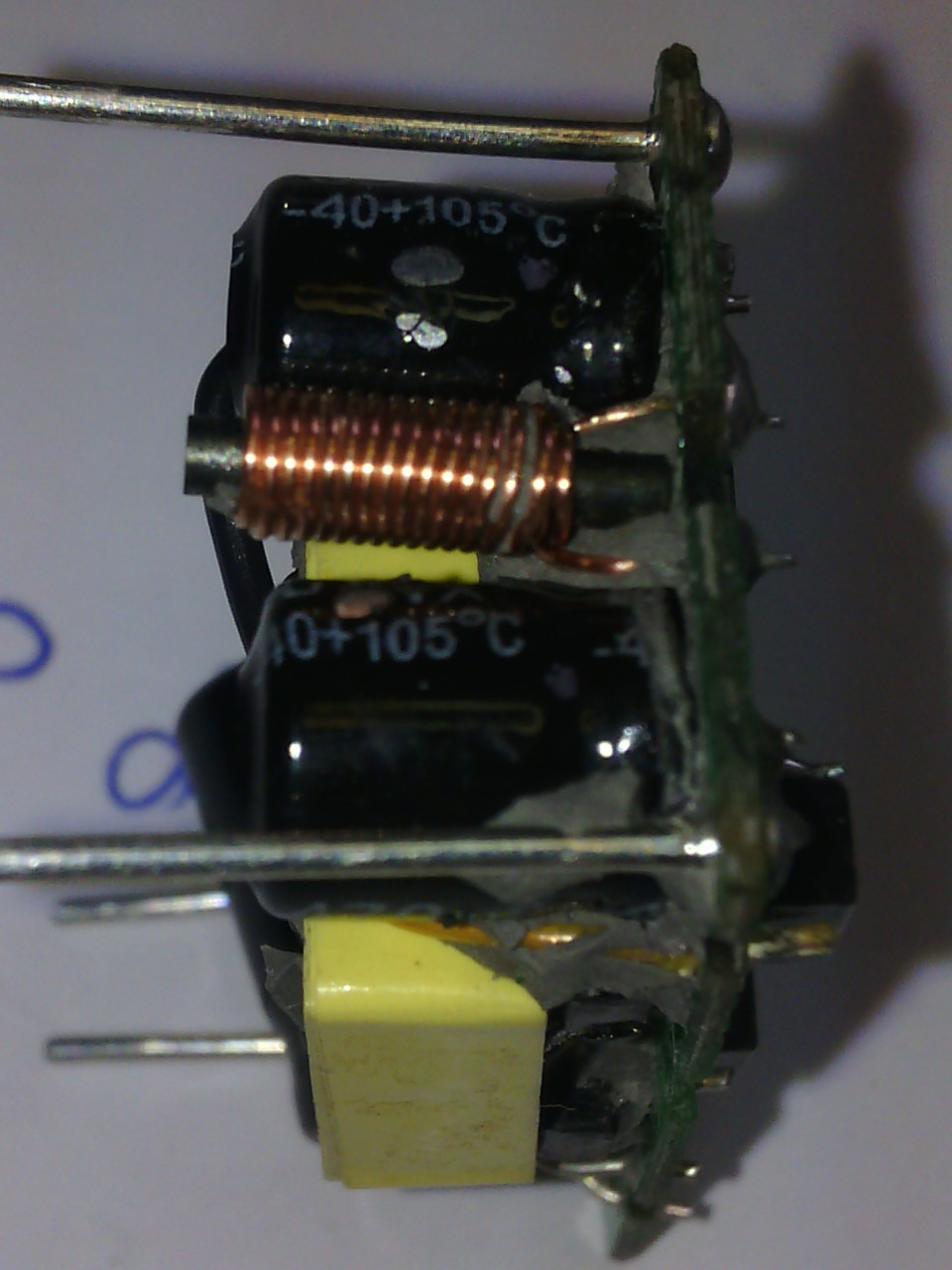Safe In-Wall AC to DC Transformers??
-
Sorry for the language thing. I will try to get some tests in English in the future.
The tester used is designed for tests of medical equipment and this specific test proves that this specific HLK was safe. The problem is, however, that it does not prove anything with respect to the safety of other HLK's.In the mean time, the same HLK is feeding a load of 730 mA. It's output voltage is 5.08 volts and the case temperature is Temp C: 46.81 Temp F: 116.26105.
@Didi. You are correct. I work in a hospital. I will try to setup the Fluke to English.
-
Wait Mike, there is more ...
I sacrificed a device to the altar of success and opened it.
That was not very difficult. After scratching away some gum stuff the following was revealed.
I will try to remove the rest of the gum with acetone. I will also do some heat and burn tests.This is quite funny to do :-)
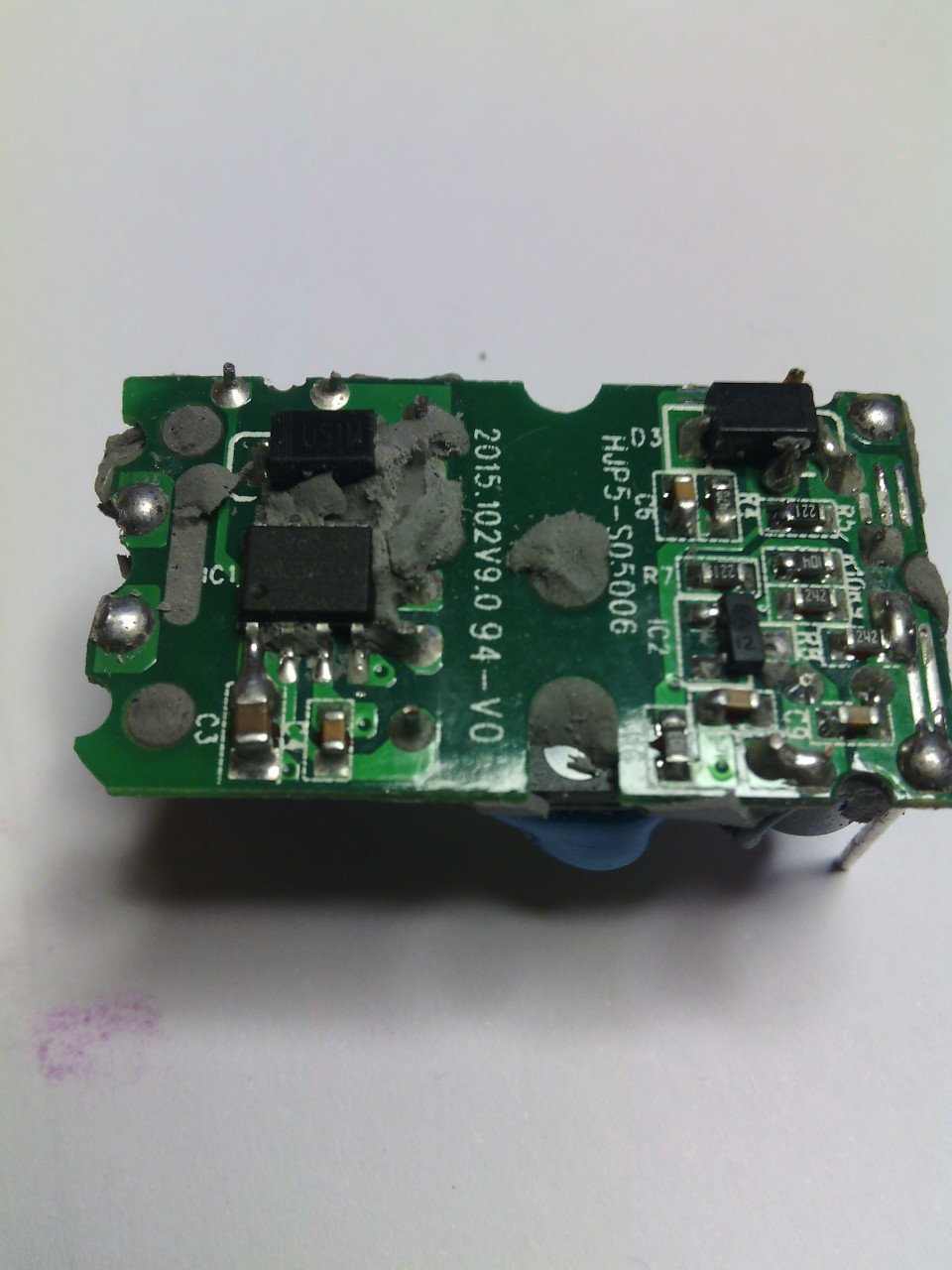
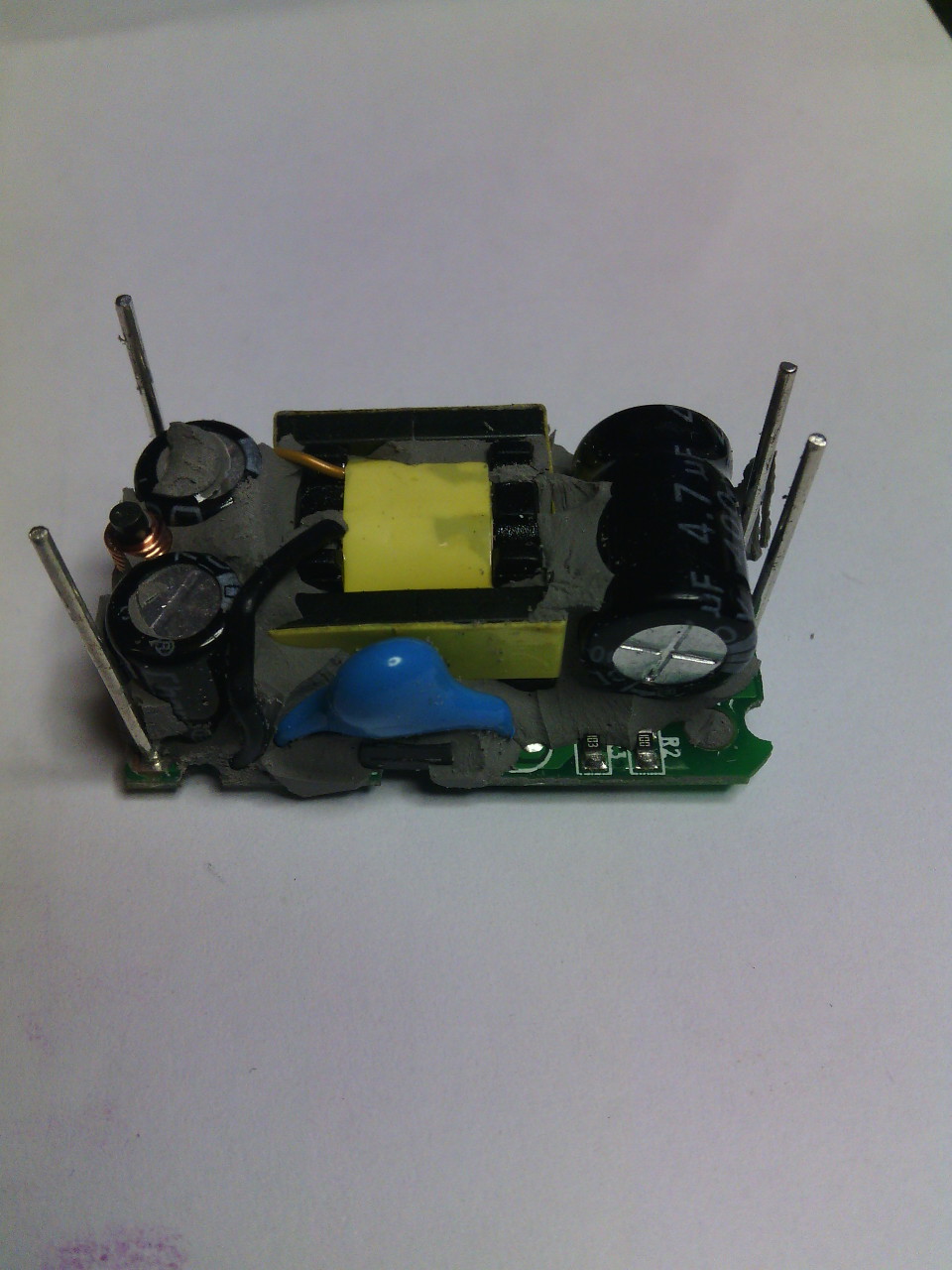

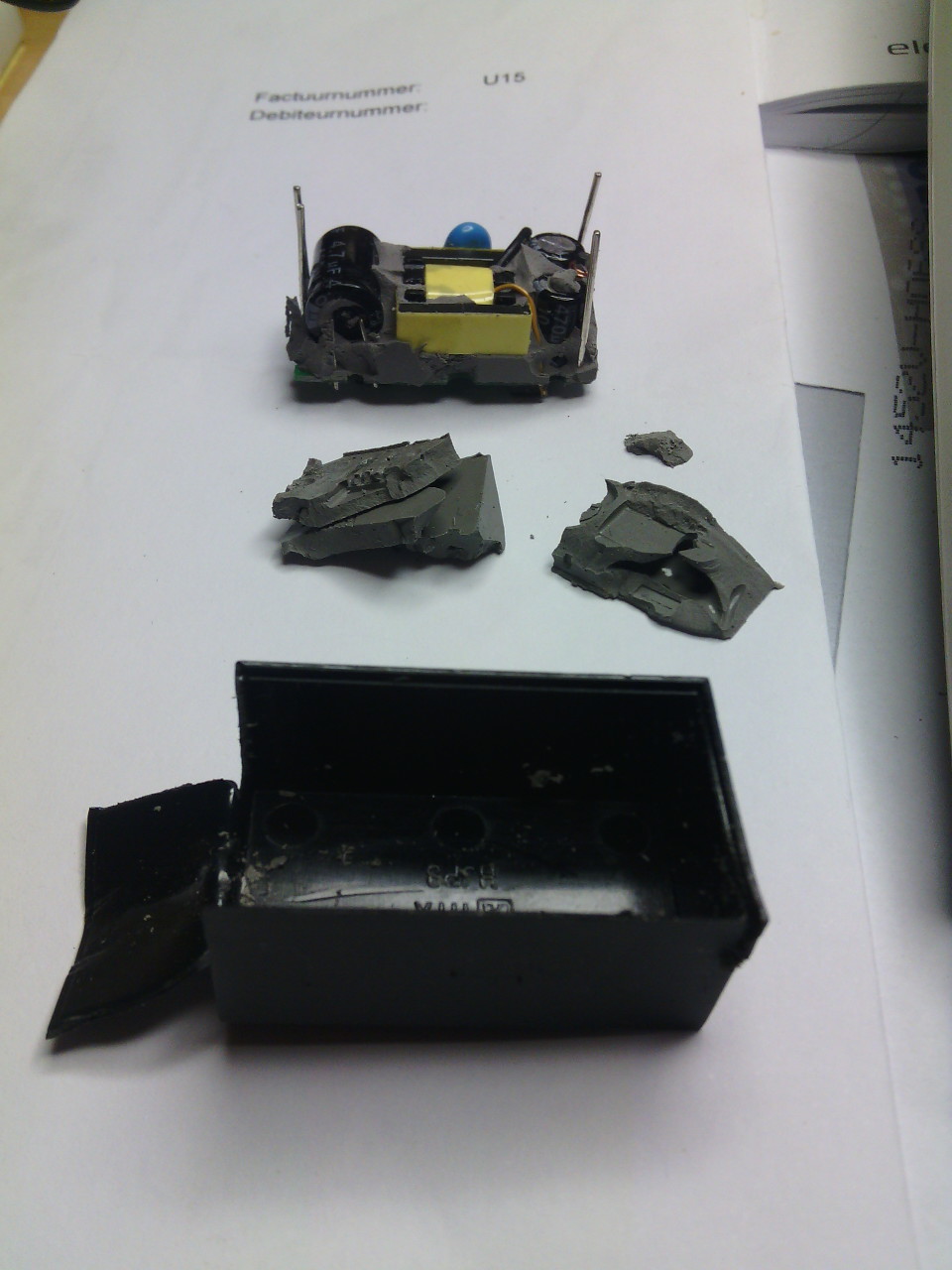
-
And I found the AP8012 chip inside. It has the following features:
_1286955514_oj99d4.pdf -
And I found the AP8012 chip inside. It has the following features:
_1286955514_oj99d4.pdf -
And I found the AP8012 chip inside. It has the following features:
_1286955514_oj99d4.pdf@Bertb thanks! Good detective work! It seems the chip provide all the protections needed. That is very encouraging
-
Thank you very much. I agree with you ap8012 seems to be a good chip. As we can see, it is difficult to make it smaller if we want all securities...and for the price including shipping I think they will sell lot of these things!
-
And I found the AP8012 chip inside. It has the following features:
_1286955514_oj99d4.pdf@Bertb it is hard to see from the photos, are the capacitors rated for 105c?
-
Observe the air gaps.
I also tried to incinerate the gum stuff that is inside the module with a cigaret lighter.
After a couple of seconds it starts to glow, then, after some 10 seconds, the material starts to burn. But this stops within some 20 seconds ofter removal of the lighter.
I made a film, but it is too large to upload.I am not an expert on AC-DC converters, but I am quite impressed by the layout of the design.
The only thing that worries me is that I do not see how the OVP is created. On the other hand, this can be easily solved by adding a fuse and a ovp zener in the primary circuit.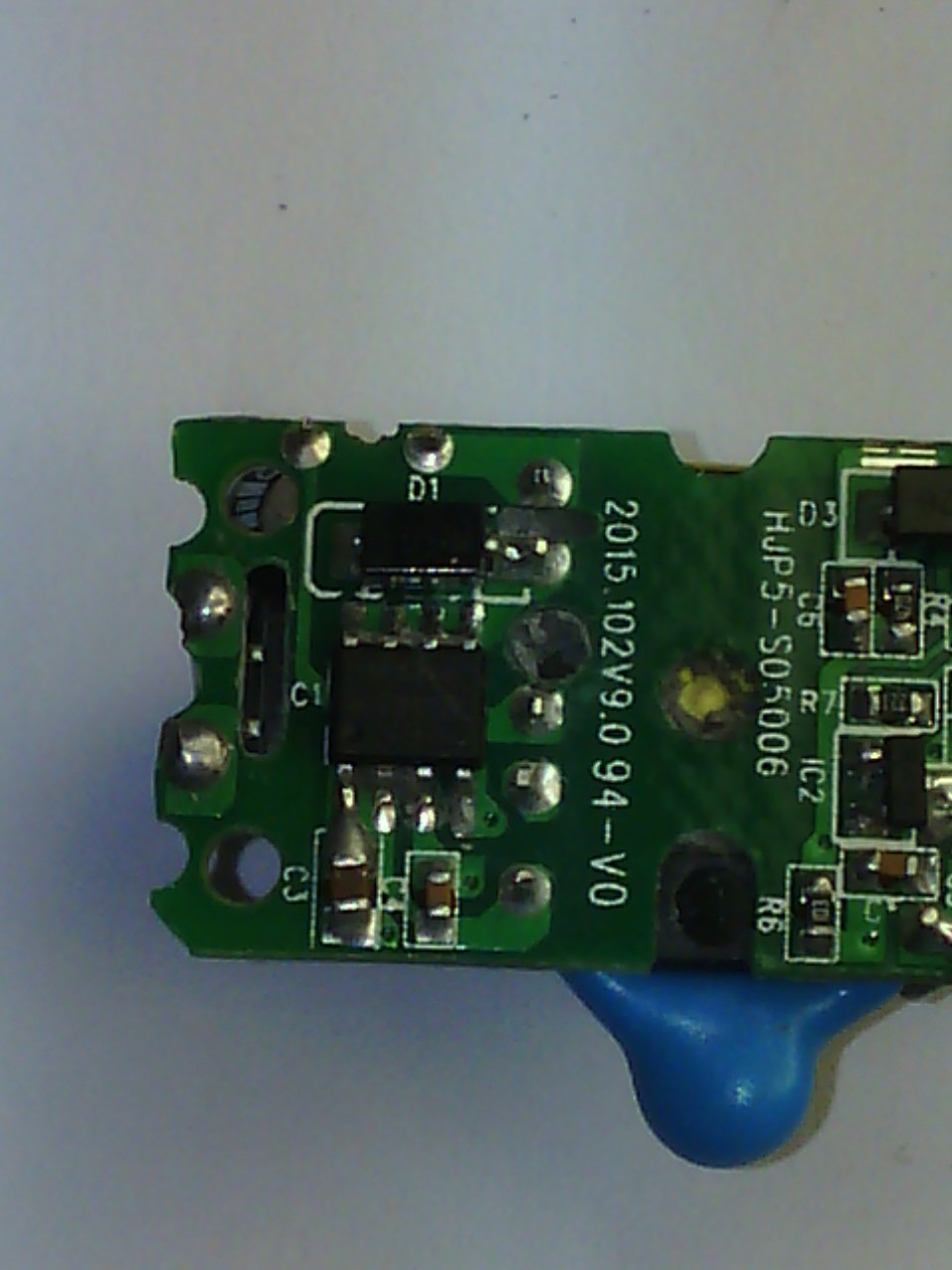
-
@Bertb yes,although to be expected. Did you see the comparison mentioned a bit earlier in this thread? That is the first thing he checked
-
In the datasheet we can see it is implemented in the chip (in the block diagram) and how it works is explained at page 7. If VCC not well built, the chip would not work well I think.
-
I do not totally agree with this. When I take a look at the example circuit and read the ovp text, I can only conclude that the output is protected, because the circuit seizes to work when VCC rises to high. Whatever happens to the input circuit, I don't know. Therefore I prefer a fuse and and a varistor.
Have a look at the tutorial link text
-
I do not totally agree with this. When I take a look at the example circuit and read the ovp text, I can only conclude that the output is protected, because the circuit seizes to work when VCC rises to high. Whatever happens to the input circuit, I don't know. Therefore I prefer a fuse and and a varistor.
Have a look at the tutorial link text
@Bertb thank you for your testing!!! Although I don't know much about hardware I am gathering by the posts here that it is mostly good news!
So, now for the big question... If I were to add an external fuse like pictured here does everyone agree this is safe to put in a wall?
And, a follow up question if the answer is yes. Are there any basic tests we can do at home to verify the performance should be the same as what was tested here?
-
@Bertb, thanks a lot. I guess you mention to put a varistor/fuse right at output of this device, for example a 7K 14V varistor in parallel, and a 500mA fuse in series?
And what about the fire burn test --- Perhaps is there a method to measure it (and compare to some standard?).
-
I agree with you about varistor. it is a good idea.
-
I did not finish the automated power tester, but I put an HLK with a DS18B20 temp sensor in a closed flush box(is that the English word for the box in the wall, used for domestic wiring?).
A simple resistor acts as a load and draws a 800 mA from the power supply. That is 33% more than the max continuous value. Voltage across the leads is 4.96. That is 5.08 without load. Not too bad. At 600 mA (100% load) the voltage is also 5.00.
The Dallas says that the surface temperature at the HLK is 48.19 c ( F: 118.74).
Also do not forget to mount adequate capacitors to reduce ripple.@petewill and @rvendrame ... Every country has directives regarding flammability. I cannot say which one is valid. I have seen some testing in the past. They put a burner under the device under test and waited to see what happened after removal of the source. In general (without any warranty whatsoever) when there are no flames or when they extinguish autonomic is good. If there is no hot material dripping from the DUT, that is also good. The test I carried out is described above. No dripping en self extinguishing. So I am satisfied.
Sorry, I cannot be more specific. I do not have the knowledge.@rvendrame: yes the fuse in series in the mains live wire en the varistor in parallel with the primary side of the HLK.
With respect to the varistor ... see the sheet below:
Take a value that is well above the normal AC tension of your mains power, but below the max input voltage of the HLK. so in Netherlands 250 volts will do. -
@Bertb, thanks again. I got a bit confused, do you mean put the varistor + fuse into the PSU input (AC Mains)? I was more thinking in over voltage protection on output. So a low-volt varistor together with a fuse/ptc, both on the 5V output.
My concern is having something wrong into the PSU-PWM control, and somehow the AC mains leaking to the low-volt side, cause arduino+friends burn/flaming. But I'm a hobbyist, so maybe I'm guessing wrong here.
Maybe to be on safest side --- varistor + fuse/ptc on both AC mains and 5V rails?

